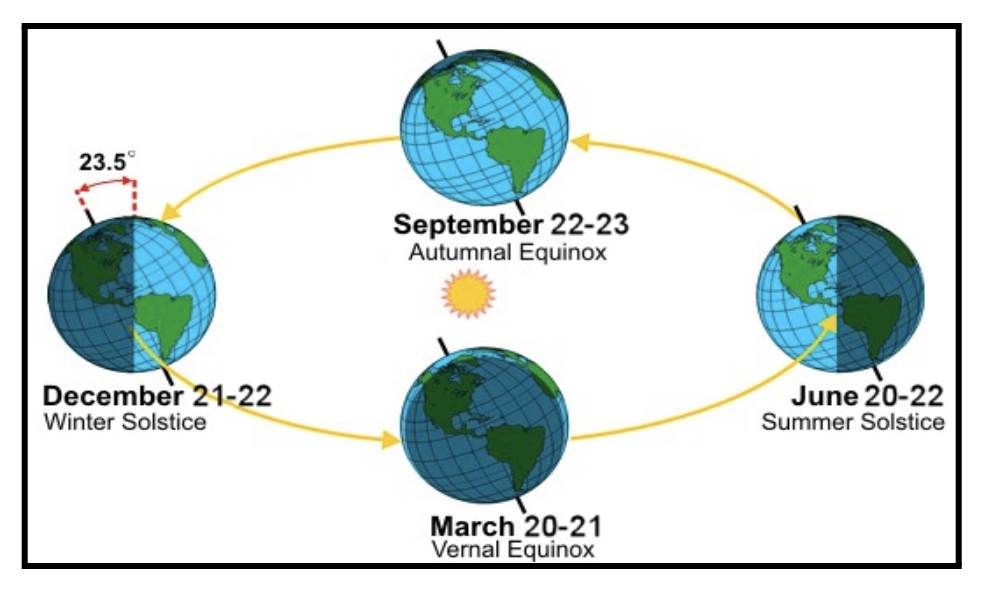News Excerpt:
The longest day of the year, for anyone living north of the Equator, was observed on June 21 i.e. Summer Solstice.
About Summer Solstice:
- It occurs when the Sun is directly over the Tropic of Cancer, or more specifically right over 23.5 degrees north latitude. During this time, the Northern Hemisphere is tilted towards the sun. As a result, these areas receive more heat.
- The maximum amount of sunlight received by the Northern Hemisphere during this time is usually on June 20, 21, or 22.
- The North Pole is inclined towards the sun and thereby places beyond the Arctic Circle experience continuous daylight for about six months.
- The areas near the poles receive less heat as the rays of the sun are slanting.
- Since a large portion of the Northern Hemisphere is getting light from the sun, it is summer in the regions north of the equator.
- At this time in the Southern Hemisphere, all these conditions are reversed. It is winter there. The nights are longer than the days. This position of the earth is called the Summer Solstice.
- Summer solstice, however, does not necessarily mean the earliest sunrise or the latest sunset. That depends on the latitudinal location of the country.

|
Winter Solstice
- The Winter Solstice was observed on 22nd December,2023. It is also known as the "first day of winter" in the Northern Hemisphere.
- It is also referred to as 'hiemal solstice' or 'hibernal solstice,' it marks the shortest day of the year in this hemisphere.
- December’s winter solstice is when the northern half of the Earth is tilted furthest away from the sun, marking the "astronomical" first day of winter.
- The Tropic of Capricorn receives direct rays of the sun as the South Pole tilts towards it.
- As the sun’s rays fall vertically at the Tropic of Capricorn (23.5° S), a larger portion of the Southern Hemisphere gets light.
- The Southern Hemisphere receives most sunlight on December 21, 22 or 23 when the Northern Hemisphere has its longest nights or the winter solstice.
- Following the winter solstice, each day in the northern hemisphere gradually grows longer until the summer solstice.
|
|
Solstice
- The word "solstice" derives from 'sol,' the Latin word for sun, and 'sistere,' which means "to stand still”.
- During the solstice, the Earth’s axis is tilted in a way that the Earth’s poles are most extremely inclined toward or away from the sun
- Typically, this imaginary axis passes right through the middle of the Earth from top to bottom and is always tilted at 23.5 degrees with respect to the Sun.
- Therefore, the solstice, as NASA puts it, is that instant in time when the North Pole points more directly toward the Sun than at any other time during the year. Solstice means “sun stands still” in Latin.
Equinox
- On 21st March and September 23rd, direct rays of the sun fall on the equator.
- At this position, neither of the poles is tilted towards the sun; so, the whole earth experiences equal days and equal nights. This is called an equinox.
|



